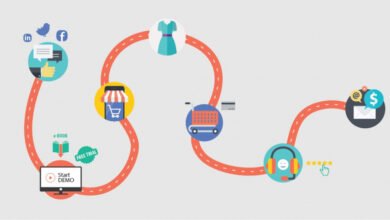Why First-Party Data Is the Key to Successful Digital Campaigns

In the rapidly evolving landscape of digital marketing, data has emerged as the cornerstone of effective and targeted campaigns. As businesses navigate the complexities of consumer privacy and shifting regulatory environments, here are invaluable insights and solutions to harness the power of first-party data. Embracing first-party data not only ensures compliance with privacy laws but also enhances the precision and personalization of marketing efforts, driving superior outcomes for digital campaigns.
Understanding First-Party Data
What Is First-Party Data?
First-party data refers to the information that a company collects directly from its audience or customers. This data is gathered through various interactions and engagements, such as website visits, purchase transactions, subscription forms, and customer feedback. Unlike third-party data, which is sourced from external entities, first-party data is owned and controlled by the business, providing a reliable and accurate reflection of customer behavior and preferences.
Types of First-Party Data
First-party data can be categorized into several types, each offering unique insights:
- Transactional Data: Information related to purchases, such as items bought, transaction amounts, and purchase frequency.
- Behavioral Data: Data on how users interact with a website or app, including pages visited, time spent, and navigation paths.
- Demographic Data: Basic information about customers, such as age, gender, location, and occupation.
- Psychographic Data: Insights into customer interests, values, attitudes, and lifestyles.
- Engagement Data: Metrics related to how customers engage with marketing campaigns, including email opens, click-through rates, and social media interactions.
The Benefits of First-Party Data in Digital Campaigns
Enhanced Accuracy and Reliability
First-party data is inherently more accurate and reliable than second or third-party data. Since it is collected directly from interactions with your audience, it reflects genuine customer behavior and preferences. This accuracy enables businesses to make informed decisions, tailor their marketing strategies effectively, and achieve better results.
Better Privacy Compliance
With the introduction of stringent data privacy regulations like the General Data Protection Regulation (GDPR) and the California Consumer Privacy Act (CCPA), maintaining compliance has become paramount. First-party data collection methods are typically more transparent and consensual, reducing the risk of non-compliance. By focusing on first-party data, businesses can ensure that their data practices align with legal requirements and build trust with their audience.
Enhanced Personalization
Personalization is a key driver of successful digital campaigns. First-party data allows marketers to create highly personalized experiences by understanding individual customer preferences and behaviors. Personalized content, recommendations, and offers resonate more with customers, leading to increased engagement, higher conversion rates, and improved customer loyalty.
Improved Customer Relationships
Collecting and utilizing first-party data fosters a deeper understanding of your customers, enabling you to build stronger relationships. By leveraging this data, businesses can anticipate customer needs, address pain points, and deliver value-added experiences. This customer-centric approach not only enhances satisfaction but also drives long-term loyalty and advocacy.
Comparing First-Party Data with Second and Third-Party Data
Second-Party Data
Second-party data is essentially someone else’s first-party data. It is shared between trusted partners, providing additional insights without the need to collect new data. While second-party data can complement first-party data, it still involves reliance on external sources, which may introduce uncertainties regarding data accuracy and privacy compliance.
Third-Party Data
Third-party data is aggregated from various external sources and sold to businesses for marketing purposes. Although it offers a broad scope of information, third-party data often lacks the precision and reliability of first-party data. Additionally, the use of third-party data raises significant privacy concerns and faces increasing regulatory scrutiny, making it a less viable option in today’s privacy-focused environment.
Advantages of First-Party Data
- Ownership and Control: Businesses have full ownership and control over first-party data, ensuring its accuracy and integrity.
- Higher Relevance: First-party data is directly related to your specific audience, making it more relevant and actionable.
- Cost-Effectiveness: Relying on first-party data reduces the need for expensive data purchases from external sources.
- Enhanced Privacy: First-party data collection methods are more transparent and compliant with privacy regulations, minimizing legal risks.
How to Collect First-Party Data
Website Interactions
Your website is a primary source of first-party data. By analyzing user behavior on your site, such as pages visited, time spent, and actions taken, you can gain valuable insights into customer interests and preferences. Implementing tools like Google Analytics or more advanced data management platforms can help capture and analyze this data effectively.
Mobile Apps
Mobile applications offer another avenue for collecting first-party data. User interactions within the app, including usage patterns, feature engagement, and in-app purchases, provide rich data that can be leveraged to enhance user experiences and optimize marketing strategies.
Customer Relationship Management (CRM) Systems
CRM systems store a wealth of first-party data, including customer contact information, purchase history, and interaction records. By integrating CRM data with your marketing efforts, you can create more personalized and targeted campaigns that resonate with your audience.
Social Media Platforms
Engaging with customers on social media platforms allows you to collect first-party data through interactions, comments, shares, and likes. This data can help you understand your audience’s preferences and tailor your social media strategies accordingly.
Surveys and Feedback Forms
Directly asking your customers for feedback through surveys and forms is an effective way to collect first-party data. This method not only provides actionable insights but also demonstrates that you value your customers’ opinions, further strengthening your relationship with them.
Best Practices for Collecting First-Party Data
Obtain Explicit Consent
Transparency is crucial when collecting first-party data. Ensure that you obtain explicit consent from your users before collecting their data. Clearly communicate how their data will be used and provide options for users to manage their data preferences.
Ensure Data Quality
High-quality data is essential for effective marketing. Implement measures to validate and clean your data regularly, eliminating duplicates, correcting inaccuracies, and ensuring completeness. High-quality data leads to more accurate insights and better decision-making.
Implement Data Security Measures
Protecting the data you collect is paramount. Implement robust security measures, including encryption, access controls, and regular security audits, to safeguard your first-party data from unauthorized access and breaches.
Use Data Segmentation
Segmenting your first-party data based on various criteria, such as demographics, behavior, and preferences, allows you to create more targeted and relevant marketing campaigns. Effective segmentation enhances personalization and improves campaign performance.
Continuously Update and Refine Data
Data collection should be an ongoing process. Continuously update and refine your first-party data to reflect changes in customer behavior and preferences. This ensures that your marketing strategies remain relevant and effective.
Tools and Technologies for Managing First-Party Data
Tag Management Systems (TMS)
Tag management systems, such as Google Tag Manager, allow you to efficiently manage and deploy tracking tags on your website. These systems simplify the process of collecting first-party data, enabling you to implement tracking without extensive coding knowledge.
Customer Data Platforms (CDP)
Customer data platforms aggregate and unify first-party data from various sources, creating a comprehensive view of each customer. CDPs facilitate data analysis and segmentation, empowering you to create more personalized and targeted marketing campaigns.
Data Management Platforms (DMP)
Data management platforms help you collect, organize, and activate first-party data for marketing purposes. DMPs enable you to segment your audience, analyze customer behavior, and optimize your marketing strategies based on data-driven insights.
Analytics Tools
Advanced analytics tools, such as Google Analytics and Adobe Analytics, provide deep insights into customer behavior and campaign performance. These tools help you measure the effectiveness of your marketing efforts and identify areas for improvement.
Marketing Automation Platforms
Marketing automation platforms, like HubSpot and Marketo, leverage first-party data to automate and personalize marketing campaigns. These platforms streamline your marketing processes, allowing you to deliver timely and relevant messages to your audience.
Best Practices for Maximizing First-Party Data
Prioritize Data Collection Strategies
Developing effective data collection strategies ensures that you gather high-quality first-party data. Focus on creating engaging and value-driven interactions that encourage customers to share their information willingly.
Leverage Advanced Analytics
Utilize advanced analytics to extract meaningful insights from your first-party data. By analyzing patterns and trends, you can uncover valuable information that informs your marketing strategies and drives better results.
Foster Transparency and Trust
Building trust with your audience is essential for successful first-party data collection. Be transparent about your data practices, clearly communicate how data is used, and provide options for customers to manage their data preferences.
Optimize Data Utilization
Maximize the value of your first-party data by integrating it into all aspects of your marketing efforts. Use data-driven insights to inform content creation, campaign planning, and customer engagement strategies, ensuring that every marketing initiative is backed by reliable data.
Continuously Evolve Your Data Strategy
The digital landscape is constantly changing, and so should your data strategy. Regularly review and update your data practices to stay ahead of industry trends, regulatory changes, and evolving customer expectations.
Conclusion
In an era where data privacy and consumer trust are paramount, first-party data stands out as the key to successful digital campaigns. By leveraging first-party data, businesses can create highly personalized, targeted, and effective marketing strategies that resonate with their audience while ensuring compliance with privacy regulations.
Embracing first-party data not only enhances the accuracy and reliability of your marketing efforts but also builds stronger relationships with your customers. The ability to collect, manage, and utilize first-party data effectively provides a competitive advantage, enabling businesses to adapt to changing market dynamics and drive sustained growth.
As the digital landscape continues to evolve, the importance of first-party data will only increase. By prioritizing ethical data collection practices, investing in the right tools and technologies, and continuously refining your data strategies, you can unlock the full potential of first-party data and achieve remarkable success in your digital marketing endeavors.
In conclusion, first-party data is not just a trend but a fundamental shift in how businesses approach digital marketing. Embrace this change, invest in the right strategies and tools, and watch your digital campaigns reach new heights of success and effectiveness.





